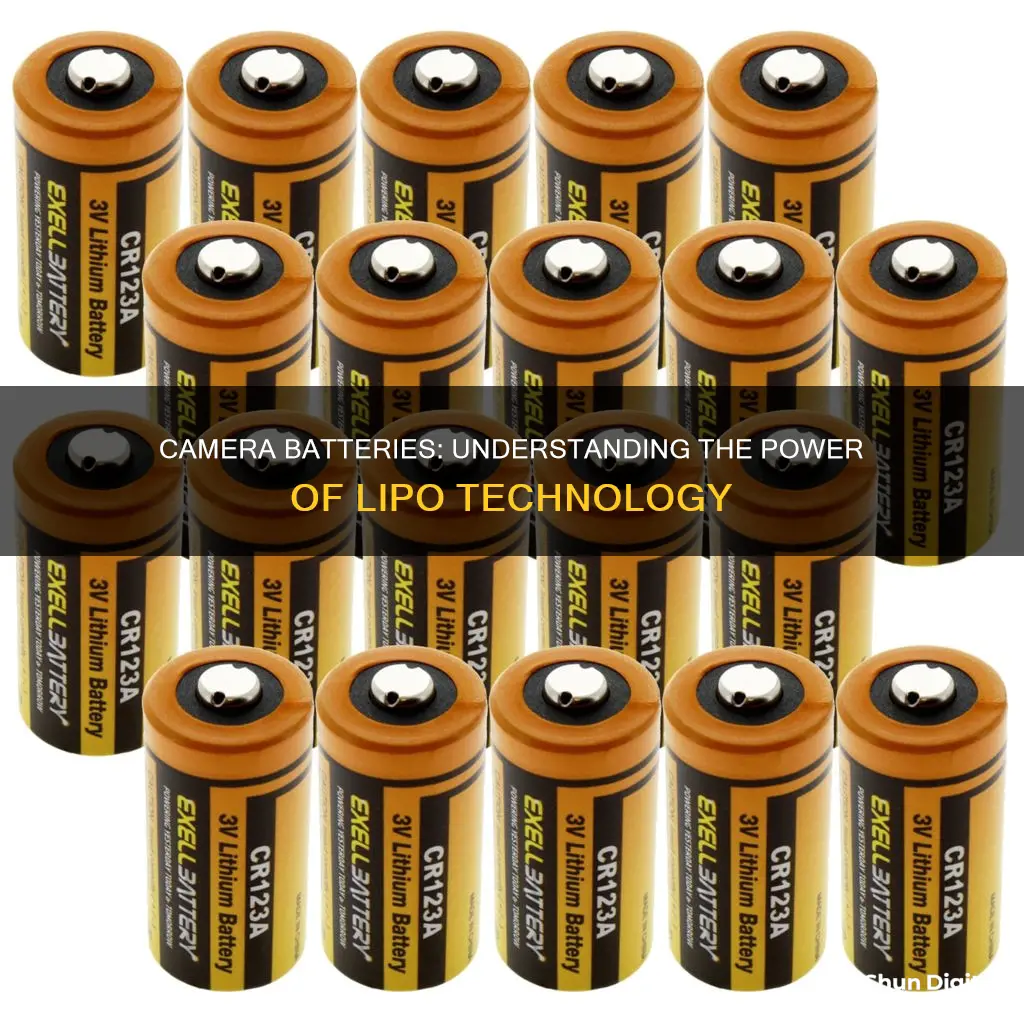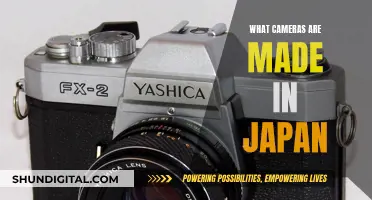
Camera batteries can be Lithium Polymer (LiPo) batteries. LiPo batteries are commonly used in various electronic devices, including cameras, due to their high energy density, lightweight design, and ability to be shaped into different sizes and configurations. They offer a good balance between power output and size, making them ideal for portable devices like cameras.
LiPo batteries have a higher energy density than other lithium-ion batteries, allowing them to store more power in a smaller package. This enables cameras to have longer battery lives or more compact designs without sacrificing performance. Additionally, LiPo batteries provide higher discharge rates, making them suitable for devices that require bursts of power, such as cameras when capturing photos or recording videos.
However, it's important to note that LiPo batteries are more sensitive to overcharging and over-discharging, which can lead to safety concerns. They are also more prone to swelling or catching fire if mishandled or damaged. Proper care and handling of LiPo batteries are crucial to ensure their safe and efficient use in cameras.
| Characteristics | Values |
|---|---|
| Type | Lithium-ion polymer battery |
| Abbreviation | LiPo, LIP, Li-poly, lithium-poly, others |
| Common Uses | Drones, radio-controlled aircraft, mobile devices, electric vehicles, cameras |
| Advantages | High energy density, lightweight, high discharge rates, flexible shape and size |
| Voltage Range | 3.2v - 4.2v |
| Storage Voltage | 3.8v |
| Charging Rate | 1C (1 times capacity) |
| Discharge Rate | High |
| Temperature Sensitivity | Yes |
| Lifespan | 150-250 cycles |
What You'll Learn
- LiPo batteries are lightweight and can be made in almost any size or shape
- They have a higher energy density than other lithium battery types
- They can be shaped into different sizes and configurations
- They have a higher discharge rate than other batteries
- They are more prone to swelling or catching fire if mishandled or damaged

LiPo batteries are lightweight and can be made in almost any size or shape
LiPo batteries are a great choice for powering devices that require bursts of power, such as cameras. They are also commonly used in drones, radio-controlled equipment, electric vehicles, and personal electronics. One of the key advantages of LiPo batteries is their lightweight design, making them highly desirable for portable devices.
The flexibility of LiPo batteries is one of their standout features. They can be made in almost any size or shape, allowing them to fit seamlessly into various devices. This adaptability is particularly beneficial for devices with unique form factors or space constraints, such as mobile phones, tablets, and drones.
The versatility of LiPo batteries extends beyond their physical characteristics. They also offer a wide range of voltage options, typically from about 4.2 V when fully charged to around 2.7–3.0 V when fully discharged. This adaptability makes them suitable for a broad range of applications.
In addition to their lightweight and adaptable nature, LiPo batteries offer higher specific energy than other lithium battery types. This means they can provide more energy per unit mass, making them ideal for weight-sensitive applications.
LiPo batteries also have a low self-discharge rate, typically around 5% per month. This means they can hold their charge for longer periods when not in use, making them a reliable choice for devices that may not be used regularly.
The flexibility, lightweight design, and high energy density of LiPo batteries make them a popular choice for manufacturers and consumers alike. They are particularly well-suited for portable devices, including cameras, where their size, shape, and power capabilities can be tailored to meet specific needs.
Zumimall Camera Charging Time: How Long Should You Wait?
You may want to see also

They have a higher energy density than other lithium battery types
LiPo batteries have a higher energy density than other lithium battery types. This means they can store more energy in a smaller and lighter package, making them ideal for applications where weight and size are critical factors. This advantage has made LiPo batteries the go-to choice for powering commercial and hobby drones, radio-controlled aircraft, and some electric vehicles. They are also commonly used in mobile devices, power banks, laptop computers, portable media players, wireless controllers, and electronic cigarettes.
The higher energy density of LiPo batteries is due to their use of a solid or gel-like polymer electrolyte instead of a liquid electrolyte found in Li-ion batteries. This allows LiPo batteries to be shaped into different sizes and configurations, making them suitable for devices with unique form factors. The energy density of LiPo batteries typically ranges from 140-200+ Wh/kg in terms of weight and 250-350+ Wh/L for volume.
The higher energy density of LiPo batteries offers several benefits. Firstly, it enables longer battery life for devices, as the batteries can store more power in a smaller package. Secondly, it allows for more compact device designs without sacrificing performance. Finally, the higher energy density makes LiPo batteries ideal for portable devices as they can provide high discharge rates, delivering bursts of power when needed.
While LiPo batteries offer higher energy density, it is important to note that they also have some drawbacks. They are more sensitive to overcharging and over-discharging, which can lead to safety concerns and a shorter lifespan. Proper care and handling of LiPo batteries are crucial to ensure their safe and efficient use.
Charging Camera Batteries: Portable Power Options
You may want to see also

They can be shaped into different sizes and configurations
The flexibility of LiPo batteries in terms of shape and size is a significant advantage, allowing them to be used in various devices with unique form factors. This adaptability is made possible by the use of a polymer electrolyte instead of a liquid electrolyte, as seen in Li-ion batteries.
LiPo batteries can be manufactured in a wide range of shapes and sizes, making them highly versatile. They can be designed to fit into devices with unconventional shapes, such as curved smartphones or wearable devices. This flexibility enables device manufacturers to create more compact and ergonomic designs, seamlessly integrating LiPo batteries into their products.
Additionally, LiPo batteries offer a wide array of widths to choose from. For instance, Padre, a company that manufactures Lithium polymer batteries, offers LiPo batteries in widths ranging from 7mm to 60mm. This variety ensures that customers can find a battery that perfectly suits their specific size requirements.
The ability to shape LiPo batteries into different sizes and configurations is a significant advantage, especially for devices with limited space or unique form factors. This versatility makes LiPo batteries a popular choice for modern camera designs, as they can be tailored to fit the compact form factors while delivering the required power output.
Charging Your VGR B Car DVR Camera Radar Detector
You may want to see also

They have a higher discharge rate than other batteries
LiPo batteries have a higher discharge rate than other batteries. This means they can deliver power more quickly and efficiently, making them ideal for devices that require bursts of energy, such as cameras. The high discharge rate of LiPo batteries allows them to provide a stable power supply to cameras, ensuring consistent performance when capturing photos or recording videos.
The discharge rate of a battery is measured in "C", which represents the ratio of discharge current to battery capacity. For example, a LiPo battery with a capacity of 1000mAh and a discharge current of 5000mA would have a discharge C rate of 5C. LiPo batteries typically have C ratings ranging from 3C to 85C, indicating their ability to discharge continuously at different rates.
The high discharge rate of LiPo batteries is one of the reasons why they are commonly used in RC models, such as quadcopters, helicopters, and cars. The high C rating allows these devices to operate with high-power motors and ensures a long runtime. Additionally, LiPo batteries have a high energy density, which means they can store more energy in a smaller and lighter package. This makes them ideal for applications where weight and size are critical factors.
It is important to note that the discharge rate of a LiPo battery can vary depending on the manufacturer and the specific battery model. Some batteries may have higher or lower C ratings, and it is essential to refer to the battery specifications to determine the exact discharge rate.
LiPo batteries also offer other advantages over traditional batteries. They have a low self-discharge rate, allowing them to hold their charge for longer periods when not in use. Additionally, LiPo batteries are flexible in terms of shape and size, making them suitable for devices with unique form factors. However, it is crucial to handle LiPo batteries with care as they are sensitive to overcharging and over-discharging, which can lead to safety concerns.
How to Ensure Your Camera Charges Efficiently While Switched Off
You may want to see also

They are more prone to swelling or catching fire if mishandled or damaged
Lipo batteries are more prone to swelling or catching fire if mishandled or damaged. This is due to the chemical composition of the batteries and the electrolyte decomposition that occurs over time. Electrolyte decomposition is the process by which the electrolyte solution breaks down into its individual components, including oxygen, carbon dioxide, and carbon monoxide. The production of these gases leads to the swelling of the battery and increases the risk of fire.
To prevent mishandling or damage, it is important to follow proper care and handling procedures for Lipo batteries. This includes using quality chargers, avoiding overcharging or overdischarging, replacing old batteries, and protecting the batteries from mechanical damage and high temperatures. It is also crucial to store Lipo batteries properly when not in use, as improper storage can accelerate the decomposition process.
If a Lipo battery does start to swell, it is recommended to stop using it and dispose of it properly as soon as possible. A swollen Lipo battery is more sensitive to mechanical failure and can catch fire if punctured or damaged. Additionally, a swollen battery may not be able to hold a charge, reducing its usefulness.
While Lipo batteries offer high energy density and lightweight construction, their sensitivity to mishandling and damage can pose safety risks. It is important for users to be aware of these risks and take the necessary precautions to ensure safe and efficient use.
Is Your Webbie HD Camera Charging?
You may want to see also
Frequently asked questions
Yes, camera batteries can be LiPo (Lithium Polymer) batteries. They are often used in cameras due to their high energy density, lightweight design, and ability to deliver high discharge rates.
LiPo batteries offer several advantages, including higher energy density, lighter weight, compact size, and longer battery life. They can also be shaped into different sizes and configurations to fit modern camera designs.
Yes, LiPo batteries require proper care and handling. They are more sensitive to overcharging and over-discharging, which can lead to safety issues. Mishandling or damaging the battery may result in swelling or catching fire.
You can check the specifications and recommendations provided by the camera manufacturer to determine the type of battery used. Some cameras may use Li-ion batteries instead of LiPo.
While it is possible to use a LiPo battery to power a camera, it may void the warranty. It is important to exercise caution and ensure proper connections and voltage compatibility to avoid damaging your equipment.







